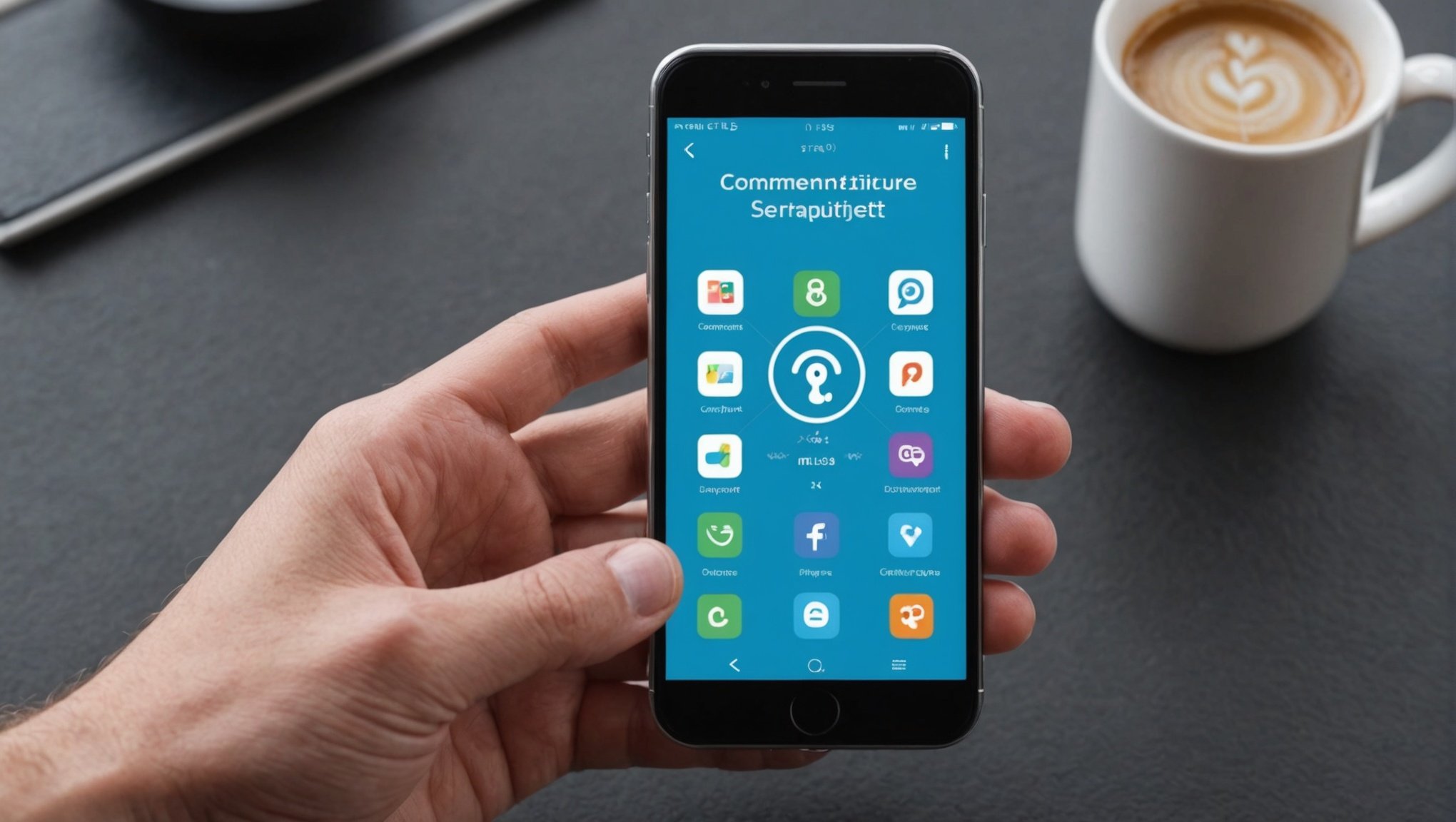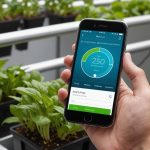In today’s fast-paced world, innovative technologies make it increasingly easier for gardening enthusiasts to maintain lush and productive greenhouses. One such advancement lies in the integration of smart technology with greenhouse management. This article will guide you, through the seamless process of setting up a smart greenhouse using your smartphone. Whether you are a seasoned horticulturist or a budding gardener, this guide will provide you with the necessary tools to optimize your gardening efforts.
Understanding Smart Greenhouses
Smart greenhouses represent the future of agriculture. They blend traditional gardening techniques with modern technology to create an efficient, sustainable, and automated growing environment. By using sensors, controllers, and other smart devices, you can monitor and regulate various factors like temperature, humidity, and light, all from your smartphone.
Have you seen this : What Are the Best Practices for Using Smartphones in Smart Healthcare Systems?
Benefits of a Smart Greenhouse
When you invest in a smart greenhouse, you’re not just upgrading your gardening tools; you’re transforming your gardening experience. These modern greenhouses offer multiple benefits:
- Efficiency: Smart greenhouses automate many tasks, saving you time and effort.
- Precision: You can fine-tune environmental controls to meet the specific needs of your plants.
- Sustainability: Optimal resource management leads to less waste, making your gardening practices more eco-friendly.
- Remote Monitoring: With your smartphone, you can keep an eye on your greenhouse from anywhere, at any time.
Think of a smart greenhouse as a well-oiled machine that continuously works to create the best possible conditions for your plants.
In parallel : What Are the Best Practices for Using Your Smartphone as a Digital Nomad?
Essential Smart Devices for Your Greenhouse
To set up a smart greenhouse, you’ll need to incorporate various smart devices. These tools will help you control and monitor your greenhouse environment more effectively. Below, we outline the essential devices and their roles.
Smart Sensors
Smart sensors are the backbone of a smart greenhouse. They collect real-time data on various environmental factors:
- Temperature Sensors: Monitor the temperature to ensure it stays within the optimal range for your plants.
- Humidity Sensors: Measure the moisture levels in the air, crucial for plant health.
- Light Sensors: Help you manage the amount of light your plants receive, whether it’s natural or artificial.
Smart Controllers
Once the sensors collect the data, smart controllers take over. They process the information and make necessary adjustments:
- Thermostats: Automatically regulate temperature based on readings from the temperature sensors.
- Humidifiers/Dehumidifiers: Adjust the humidity levels according to the data from humidity sensors.
- Grow Lights: Control light cycles to mimic natural daylight, tailored to the needs of your plants.
Smart Irrigation Systems
Water is vital for plant growth, and a smart irrigation system ensures your plants receive just the right amount:
- Soil Moisture Sensors: Determine the moisture content in the soil.
- Automated Watering Systems: Dispense water based on readings from soil moisture sensors, preventing over or under-watering.
Connectivity and Integration
To manage all these devices from your smartphone, they need to be interconnected. IoT (Internet of Things) platforms or smart home hubs can facilitate this integration:
- Wi-Fi/ Bluetooth: Ensure all devices are connected to your home network for seamless control.
- Smart Home Hubs: Products like Google Home or Amazon Alexa can centralize control, allowing you to manage everything from a single app on your phone.
How to Set Up Your Smart Greenhouse
Now that you understand the key components, let’s delve into the step-by-step process of setting up your smart greenhouse. Follow these comprehensive steps to get started:
Step 1: Assess Your Greenhouse Needs
Before purchasing any smart devices, evaluate your greenhouse’s specific needs:
- Plant Types: Different plants have varying requirements for light, temperature, and humidity.
- Greenhouse Size: The size of your greenhouse will impact the number and type of devices you need.
- Climate: Your local climate can influence the conditions inside your greenhouse.
Step 2: Choose the Right Smart Devices
Based on your assessment, select the appropriate smart devices. Consider aspects like compatibility, ease of use, and cost. Research and compare products to ensure they meet your needs.
Step 3: Install Sensors
Place temperature, humidity, and light sensors strategically around your greenhouse. Ensure they are positioned to provide accurate readings, covering all critical areas.
Step 4: Set Up Controllers
Install your smart controllers, ensuring they are compatible with the sensors. Connect them to your Wi-Fi network and integrate them with your smart home hub.
Step 5: Implement Smart Irrigation
Install soil moisture sensors and connect them to an automated watering system. Program the system to water your plants based on real-time data, avoiding unnecessary water usage.
Step 6: Connect and Configure
Finally, connect all devices to your smartphone via the chosen IoT platform or smart home hub. Configure the settings to suit your greenhouse’s specific requirements.
Step 7: Monitor and Adjust
Regularly monitor your greenhouse environment through your smartphone. Make necessary adjustments based on the data collected by your smart devices.
Maximizing the Potential of Your Smart Greenhouse
Once your smart greenhouse is up and running, the next step is to maximize its potential. This section will provide actionable tips to help you get the most out of your setup.
Regular Monitoring and Data Analysis
One of the key advantages of a smart greenhouse is the ability to collect and analyze data:
- Monitor Trends: Keep an eye on trends in temperature, humidity, and light levels. This data can help you make informed decisions about your plants’ needs.
- Adjust Settings: Use the data to fine-tune your system. For example, if you notice that your plants are thriving at a slightly higher humidity level, adjust your humidifiers accordingly.
Seasonal Adjustments
Different seasons bring different challenges. Use your smart greenhouse to make seasonal adjustments:
- Winter: Increase temperature settings to compensate for colder weather.
- Summer: Ensure adequate ventilation and shading to prevent overheating.
Integrate with Other Smart Home Systems
Consider integrating your smart greenhouse with other smart home systems for a more streamlined experience:
- Voice Control: Use voice commands via Google Home or Amazon Alexa to control your greenhouse.
- Home Security: Integrate with home security cameras to keep an eye on your greenhouse remotely.
Regular Maintenance
Even the most advanced systems require regular maintenance:
- Sensor Calibration: Periodically calibrate your sensors to ensure accurate readings.
- Device Updates: Keep your smart devices updated with the latest firmware to ensure optimal performance.
Setting up a smart greenhouse using your smartphone is not just about embracing modern technology; it’s about transforming your gardening experience into a more efficient, sustainable, and enjoyable practice. With the right smart devices and proper setup, you can monitor and control your greenhouse environment with unprecedented precision. From smart sensors and controllers to automated irrigation systems, each component plays a crucial role in maintaining the ideal conditions for your plants.
By following the steps outlined in this guide, you are well on your way to creating a smart greenhouse that not only meets but exceeds your gardening expectations. Whether you are looking to save time, reduce waste, or simply enjoy the convenience of remote monitoring, a smart greenhouse offers a wealth of benefits. With continuous monitoring and adjustments, you can ensure that your plants thrive year-round, regardless of external conditions.
In conclusion, a smart greenhouse represents the future of gardening. It allows you to harness the power of technology to create a more productive and sustainable growing environment. So, take the leap into the future and transform your greenhouse into a smart powerhouse using your smartphone.











